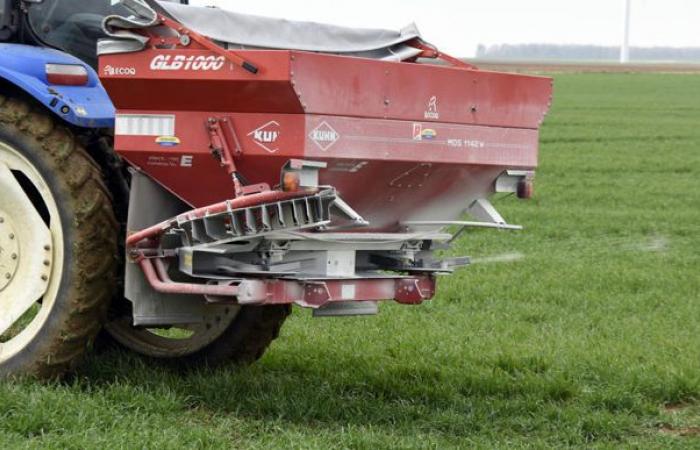How could the major crop sectors achieve the objectives of the national low carbon strategy (SNBC)? If its third version is currently being discussed, we are talking here about an objective – still provisional – of reducing direct greenhouse gas (GHG) emissions by -22% by 2030 compared to 2015.
Roadmap
“Technically it is achievable, but economically it is another matter,” warns Anthony Uijttewaal, head of the agronomy, economics and environment department at Arvalis. He presented the roadmap for decarbonization of field crops during the Cereal Industries Technical Days (JTIC) on November 7, 2024.
The exercise was carried out by the inter-professions (Intercéales, Terres Univia), the technical institutes (Arvalis, Terres Inovia, ITB), the specialized associations of the FNSEA of the main major crops (AGPB, AGPM, Fop, UNPT AGPL and CGB) , and the Agrosolutions firm.
“We considered direct and indirect emissions linked to mineral fertilizers, energy, and organic fertilizers,” indicates Anthony Uijttewaal. We have not taken into account other inputs, such as seeds, materials or phytos, the weight of which is negligible in the field crops sector.
Nine sets of levers
Achieving the objective is conditional on the implementation of nine levers already available across the French farm. Their combined mobilization would make it possible to reduce direct GHG emissions by 21% compared to 2015: this is the indicator that is targeted by the SNBC. The carbon sink would be slightly improved. The total balance, which takes into account indirect emissions and avoided emissions, would be improved by 35%.
“To go further after 2030, other innovations will be needed,” assures Anthony Uijttewaal.
Modified French sole
The first levers concern an evolution of the crop rotation:
- The development of legumes as main crops: + 300,000 ha between 2015 and 2030, to reach around 971,000 ha, and at the same time an increase in the average yield of these crops by + 17%. “We focused on completing the protein plan,” explains Anthony Uijttewaal.
- The development of crops with low nitrogen requirements (hemp, flax, sunflower, etc.): + 500,000 ha, to reach 1.26 million hectares. “This objective is largely driven by sunflowers, the increase in which was already achieved in 2023.”
- The development of organic agriculture, to reach 7% of the surface area. A level close to the current level: “we had initially expected 10%, but taking into account the markets we returned to 7%”.
In this scenario, the area under straw cereals would increase from 9.5 million hectares in 2015 to 8.9 million hectares in 2030. Mechanically, the sector’s trade balance, driven by wheat exports, would find it weakened.
Fertilisation
Several levers relate to fertilization, to reduce emissions of nitrous oxide, a powerful GHG.
- Improvement in the management of organic fertilization: addition of volatilization inhibition products to 70% of non-buried liquid organic waste products, and burying of 50% of organic fertilizers;
- Evolution of mineral fertilization: extension of the assessment method, generalization of decision-making tools for rapeseed, management for sunflower; development of nitrification inhibitors on 20% of conventional surfaces; choice of less emissive forms (substitution of 50% of the urea with urea with inhibitor, and 50% of the nitrogen solution with ammonitrate); burial of nitrogen solutions on row crops;
- Development of more nitrogen efficient genetics: continuation of the current trend (increase in nitrogen efficiency by 1% every 3 years at constant yield and protein content) in straw cereals and corn. “This may contribute to the objective but any leverage is worth taking,” comments Anthony Uijttewaal.
Consumption of fossil fuels
Other levers complete the list.
- The development of agroforestry and hedges: + 70,000 linear km of hedges at the edges of plots and + 50,000 ha of agroforestry on arable land. “However, since 2015 we have rather lost hedges,” points out Anthony Uijttewaal.
- Reducing fossil fuel consumption: -20% of consumption via eco-driving, simplification of tillage, or even improving the performance of machines, and 50% of machines running on biofuels and biogas .
- The development of unharvested plant cover and companion plants: + 2.1 million hectares of cover, 40% of rapeseed associated with legumes including 10% under perennial cover.
Impact on margin
“Today, we have no scenario where we achieve the objective of -22% direct GHG emissions and where we store carbon in the soil without impacting the margin for farmers,” specifies well the expert. However, the capacity to store carbon in the soil, specific to the agricultural and forestry sector, “can only remain if we maintain the productive system”.
The exercise which was carried out to identify the levers and the brakes, to then “initiate a dialogue with the State so that the objective becomes a reality”, explains Anthony Uijttewaal.
Development of methanization
“The equation is all the more complex when we integrate ambitions for the supply of bioenergy and biomaterials,” points out Anthony Uijttewaal. The players in this roadmap explored a significant development scenario for methanization (48 TWh of biogas). The input mix would be made up of 42% intermediate energy crops (Cive), 4% dedicated crops and 8% crop residues (mainly straw and corn stover).
This would require 1 million hectares of winter cive and 450,000 ha of summer cive. “10% of arable land could see Cive in the crop succession, puts the expert into perspective. It is extremely structuring and it is not without consequences on the following crops, which can carry yield penalties of -10% to -25% depending on the sectors and crops”, in connection with the tension on water. .
In this scenario, the reduction in GHG emissions is -20% compared to 2015, but the storage of carbon in the soil is a little less. The total balance, which takes into account indirect emissions and avoided emissions, is improved by 38%.
This work meets the requirements of the Climate and Resilience law (2021), which provides the decarbonization roadmap for the sectors that emit the most GHGs.






